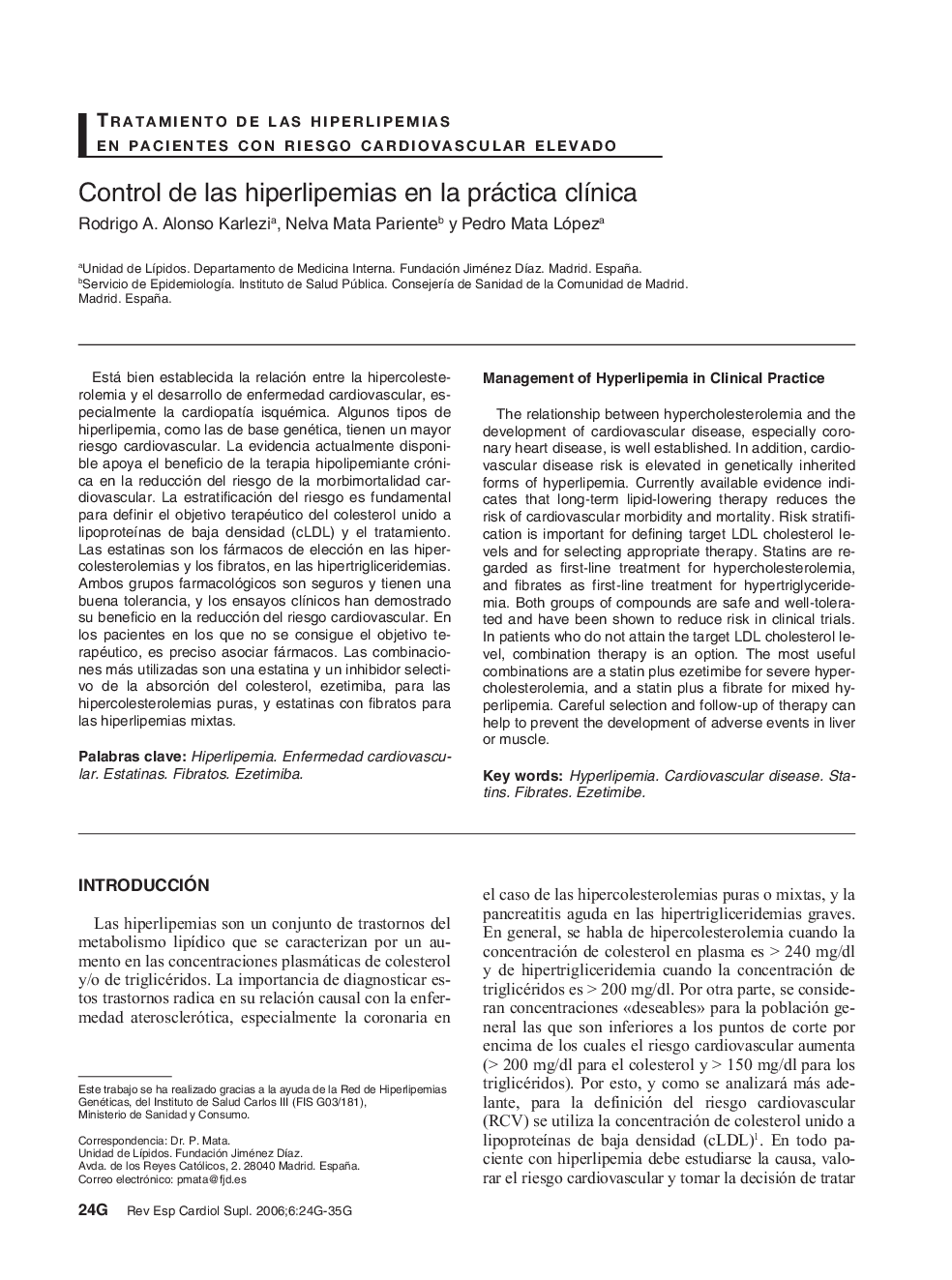| Article ID | Journal | Published Year | Pages | File Type |
|---|---|---|---|---|
| 3019823 | Revista Española de Cardiología Suplementos | 2006 | 12 Pages |
Abstract
The relationship between hypercholesterolemia and the development of cardiovascular disease, especially coronary heart disease, is well established. In addition, cardiovascular disease risk is elevated in genetically inherited forms of hyperlipemia. Currently available evidence indicates that long-term lipid-lowering therapy reduces the risk of cardiovascular morbidity and mortality. Risk stratification is important for defining target LDL cholesterol levels and for selecting appropriate therapy. Statins are regarded as first-line treatment for hypercholesterolemia, and fibrates as first-line treatment for hypertriglyceridemia. Both groups of compounds are safe and well-tolerated and have been shown to reduce risk in clinical trials. In patients who do not attain the target LDL cholesterol level, combination therapy is an option. The most useful combinations are a statin plus ezetimibe for severe hypercholesterolemia, and a statin plus a fibrate for mixed hyperlipemia. Careful selection and follow-up of therapy can help to prevent the development of adverse events in liver or muscle.
Keywords
Related Topics
Health Sciences
Medicine and Dentistry
Cardiology and Cardiovascular Medicine
Authors
Rodrigo A. Alonso Karlezi, Nelva Mata Pariente, Pedro Mata López,
